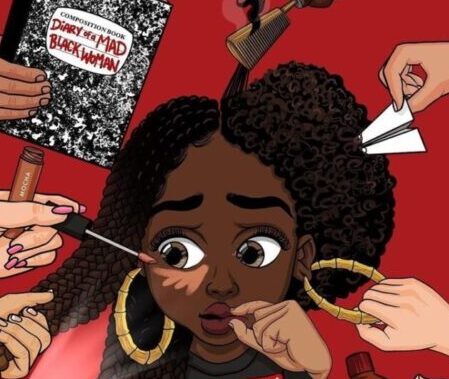(HACKENSACK, N.J.) — While the prefix “micro” means small, microaggressions can be quite devastating for the people who’re on the receiving end of them. Microaggressions are generally defined as verbal, nonverbal, and environmental slights, snubs, or insults, whether intentional or unintentional, that communicate hostile, derogatory, or negative messages to target persons based solely upon their marginalized group membership.
Microaggressions happen every day especially at work, from insults, invalidation, disrespectful comments, and judgmental remarks. When it comes to working, a lot of companies sweep it under the rug to “keep the peace.” Or, they feel like it’s not that important.
Microaggressions in a newsroom are particularly toxic because they are a way for the dominant culture to keep journalists of color in line at a time when it is more important than ever for the dominant culture to listen to and cultivate journalists of color.
Examples of newsroom microaggressions
Amber Ferguson is a senior video editor who has worked for the Washington Post for five years. She is an African American woman. In an interview, Ferguson told me she felt like her white manager treated women of color employees differently. “All the workers can be sitting at their desks and the manager would turn to the Caucasian employees and say ‘make sure you take a break and eat.” When the manager walked past a black employee she would question why they were taking a break or eating.” Ferguson said she felt left out and the supervisor didn’t care about her.
JC Whittington has been a video journalist for Politico for one year. But when she attended the University of Maryland at College Park – a Predominately White Institution – she noticed the differential treatment of her sex, gender, and race. She told me about when she was applying to an arduous and very competitive internship at the University of Maryland College Park. Apart from the application, students had to get a faculty advisor to sign off on the internship because they can receive college credit and get paid. She went to her advisor to get a signature and there was a long line outside of her advisor’s office. When it was her turn, her advisor told her “Don’t be disappointed if you don’t get this, because I have been signing students’ applications all day and it’s a very competitive internship and there are more qualified people that are applying.”
Whittington felt like her advisor was insinuating that her white students were more qualified and that she was overreaching. No advisor should talk to a student that way. It’s demoralizing and disrespectful. Whittington, one of the few women of color in her cohort, said it made her feel less than a person and disrespected. If the professor did not think she was qualified she could have said it in a more supportive way or not at all. And the professor was wrong. Whittington applied to the internship because her parents and a mentor told her that she could do it – and she got accepted.
Victoria Walker, a freelance travel reporter who lives in Brooklyn, is an African American woman who has been a journalist since 2015 and a travel reporter since 2017. Walker said, “my very existence is a microaggression, outspoken in the newsroom, coworkers said, you don’t smile enough on Zoom, or I come off as being unfriendly.”
The problem is widespread
Kelly Nguyen, in a 2017 Teen Vogue op-ed, wrote that “incidents like these have become so commonplace, POC sees them as an emotionally exhausting routine that seems to never stop. This is part of the “invisible plague” of microinvalidation, and is inflicted on millions of people of color by negating their experiences through everyday language.”
Alex Sujong Laughlin wrote in a January 2020 essay for the Poynter Institute about microaggressions in the newsroom.
“You know the feeling: You’re in a meeting — maybe it’s with your boss, or your immediate colleagues, or with a client — and someone says something,” Laughlin wrote. “It seems innocuous, but the way it hits your ear makes you feel a type of way. Maybe it’s a comment about how you run a meeting, or an edit note in a story. Maybe it’s a joke that hit a little too close to home.”
“Then you spend the next day/week/month turning the comment over in your head. Did they mean it like that? Am I being too sensitive? Do I have a responsibility to say something? What will be the consequences if I do?”
And, as she pointed out, speaking up about microaggression in the newsroom is difficult.
Microaggression is a serious, prevalent problem in newsrooms. In an article in Editor & Publisher, Larry Graham, the founder and executive director of The Diversity Pledge Institute, shared what he called “a small sample of what journalists of color have — and continue to — experience at newsrooms all across the country.”
His examples included being labeled, diminished opportunity, being a victim, feeling alone, and bracing yourself for the “N-word.”
As a POC you can never fully prepare another POC to be called the N-word. Graham believes the N-word is still being used in the newsroom and reporters argue about using it in a story if another source says it or even say it in a staff meeting as a form of disrespect. Graham wrote that “These microaggressions are just some of what diverse employees face every day.”
Different kinds of microaggressions
A common form of microaggression in the newsroom is microinvalidation. According to the Cleveland Clinic, “lots of people will have the experience where they feel like no one is listening to them or they seem invisible in a room.”
The Cleveland Clinic explains other forms of microaggressions such as microassault, microinsults, and microinvalidation. Microassaults are supposed to come off as a joke. Instead of it being a joke it’s just someone serving up a harmful stereotype on a silver platter. Microinsults are described as rude, insensitive comments, making the target audience feel as though they don’t belong. Microinvalidation is inappropriately saying you have friends of their race.
Newsroom leaders have recognized that diversity is essential both to their workplace and their journalism, but microaggressions block progress. For instance, they put pressure on POC to fit in, rather than change the culture, put POC on the defensive, and make hiring and retention more difficult.
Advice on how to handle microaggression
Kelsey Mesmer, a journalism professor at Saint Louis University, wrote that “being assertive, the uncomfortable parts call from calling out microaggression, like sexist, racist and feeling compelled = I want to interject without ruining a relationship and a difficult balance; that’s where the assertiveness can be tricky.” A separate piece, “How to speak up about microaggressions in the newsroom,” explains different methods on how to deal with microaggressions in the workplace. The article explains that you need a goal, it’s okay to just focus on your work, how and when to speak up, and if it’s too much of an emotional burden for you then don’t mend the relationship.
When you are in a professional setting you have to learn to be professional at all times. Sometimes it is difficult to speak up when you are singled out in a work environment, and many people don’t know how to handle it if they were put in that situation. The best idea would be to inform your supervisor but nobody wants to ruin their relationship with their coworkers.
What newsroom leaders should do
Nobody wants to lose their job or get on their supervisor’s bad side for speaking up. In order for a newsroom leader to create a better and more safe work environment, there should be a complaint and suggestion mailbox. Instead of employees writing their names on it, they can write their employee ID numbers. Once the supervisor reads the complaint or suggestion, they can set up a team leader meeting to discuss the suggestions. For the complaint, the supervisor can sit the team member down, discuss the issue, and ask the team worker what they think should be done. After that conversation, the supervisor should follow up with the team member on their feelings and if anything has changed, a few days later. When employees bring up a complaint they feel as though they are not being heard. Supervisors need to take employees’ concerns and suggestions seriously.
Things have gotten better since BLM, but there’s a long way to go
The Black Lives Matter movement brought racism to center stage. The movement was an indication to prove people’s ideology of racism and to prove to the world that it is still real and alive. In the unfortunate event of George Floyd’s passing, the world started to slowly bring more awareness to racism in everyday events, such as school, work, and the grocery store. After 2020, issues have changed in the newsroom but there is still a lot to be done.


